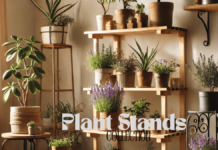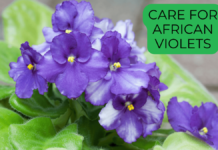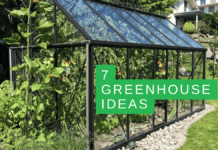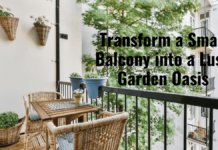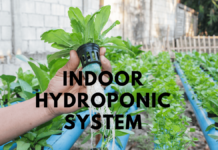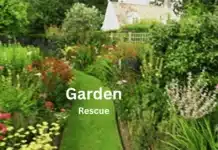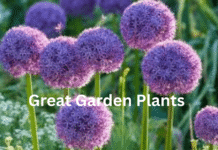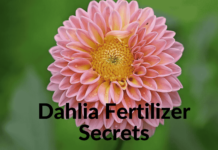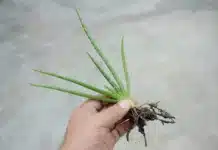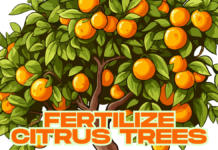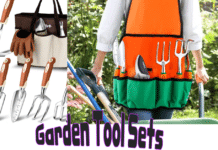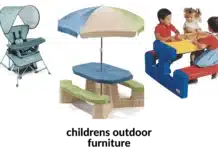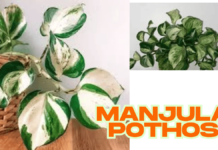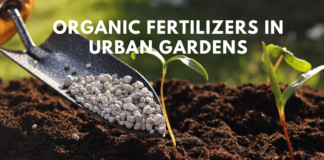Composting is a simple yet transformative process that turns everyday organic waste into a nutrient-rich mixture, perfect for enhancing soil health and promoting plant growth. By utilizing both green waste, such as fruit peels, vegetable scraps, and coffee grounds, and brown waste, like dry leaves, cardboard, and newspaper, you can create a sustainable cycle of waste reduction and soil enrichment. The key to successful composting lies in choosing the right DIY compost bin that suits your space and needs.The choice of materials for your DIY compost bin can significantly influence its effectiveness and ease of use. Common materials include pallets, wire fencing, plastic totes, trash bins, straw bales, buckets, and even barrels for creating compost tumblers. Each material offers distinct advantages, allowing you to customize your compost bin to fit your specific requirements and available space.
1. 5-Gallon Bucket Compost Bin: Compact and Efficient
For those with limited space, a 5-gallon bucket compost bin is an excellent choice. This compact solution is perfect for small yards or apartments and requires minimal investment. To create this bin, gather a couple of five-gallon buckets, a drill, shredded paper, kitchen scraps, and worms. The process is straightforward, taking less than an hour to complete. This method not only saves space but also provides an efficient way to manage organic waste.
2.Trash Can Compost Bin: A Budget-Friendly Option
Transforming a trash can into a compost bin is an easy and economical way to start composting. This method is ideal for beginners and requires only a plastic trash can with a lid and a few additional materials. The entire project can be completed in under an hour, making it a quick and accessible option for those looking to reduce food waste and create nutrient-rich compost.
3.Pallet Compost Bin: Durable and Cost-Effective
For a more permanent composting solution, consider building a pallet compost bin. This option is both affordable and durable, providing a designated area for composting without breaking the bank. By using wood pallets and some basic hardware, you can construct a sturdy compost bin that will last for years. This method is perfect for those who want a reliable and long-lasting composting solution.
4.Wooden Compost Bin: Sturdy and Long-Lasting
If you’re serious about composting and want a bin that will withstand the elements, a wooden compost bin is an excellent choice. This DIY project involves using cut lumber and a hinged lid to create a robust and functional compost bin. Features like hardware cloth for air circulation and hinged access to the bottom of the bin make it easy to manage and harvest finished compost.
5.Wire Fence Compost Bin: Simple and Adaptable
A wire fence compost bin is one of the most inexpensive and adaptable options available. By using chicken wire and posts, you can create a secure composting area that can be easily adjusted to fit your space. This method is ideal for those who want a flexible and cost-effective composting solution.
6.Tote Compost Bin: Kid-Friendly and Easy to Build
A plastic tote can be transformed into a compost bin with just a few simple modifications. By drilling holes in the tote to promote air circulation, you can create an effective composting system that is low to the ground and perfect for involving children in the composting process. This method is straightforward and requires minimal materials, making it an excellent choice for families.
7.Straw Bale Compost Bin: Natural and Insulating
Using straw bales to create a compost bin is a natural and customizable option. This method allows you to adjust the size of your compost pile as needed and provides insulation to speed up the composting process. As the straw breaks down, it can be incorporated into the compost, adding additional nutrients to the mixture.
8.DIY Rotating Compost Bin Tumbler: Efficient and Odor-Controlled
A DIY compost tumbler is an efficient way to manage compost, allowing you to easily turn the pile and control odors. By using an old barrel and some sawhorses, you can create a rotating compost bin that ensures even decomposition. This method is perfect for those who want a hands-on approach to composting and are willing to invest a little extra effort.
9.Plastic Storage Container Compost Bin: Rodent-Proof and Practical
For those concerned about pests, a plastic storage container compost bin offers a rodent-proof solution. By reinforcing the container with wire mesh or hardware cloth, you can keep unwanted visitors out while still allowing for proper air circulation. This method is practical and effective, providing a secure environment for composting.
10.In-Ground Compost Method: Simple and Direct
The in-ground compost method is a straightforward approach that requires minimal materials and effort. By digging a hole in your garden and adding compostable materials directly into it, you can enrich the soil without the need for a traditional compost bin. This method is ideal for those who want a quick and easy way to improve soil quality and support plant growth. Simply cover the composting materials with soil, and over time, they will decompose and nourish the surrounding plants.
11.Trench Composting: Ideal for Row Gardens
Trench composting is an extension of the in-ground method, particularly beneficial for gardens with rows of plants. By digging a trench alongside your plants and filling it with compostable materials, you create a nutrient-rich environment that supports healthy plant development. This method is especially useful in vegetable gardens, where crops are often planted in evenly spaced rows. Once the trench is filled, cover it with soil, and let nature take its course.
12.Hot Composting: Accelerated Decomposition
Hot composting is a technique that optimizes microbial activity to speed up the decomposition process. By creating a compost bin that is at least 4 feet by 4 feet and positioning it in full sun, you can generate the heat necessary for rapid composting. This method requires more effort and attention, such as regular turning and monitoring of moisture levels, but results in faster compost production. It’s ideal for those who need compost quickly and are willing to invest the time to maintain the pile.
13.Old Dresser Drawer: Creative Indoor Composting
For those unable to compost outdoors, repurposing an old dresser drawer offers a creative indoor composting solution. By covering the top with a hinged piece of wood or heavy fabric, you can create a compact composting vessel that fits easily in small spaces. This method is perfect for apartment dwellers or anyone looking to compost on a smaller scale. Ensure proper ventilation and moisture control to prevent odors and promote effective decomposition.
14.Bokashi Bucket: Microorganism-Driven Composting
Bokashi composting is a unique method that uses microorganisms to quickly break down organic materials. While bokashi kits are available for purchase, you can easily make your own composter using two 5-gallon buckets and a drill. Drill holes in the bottom of one bucket, place it inside the other, and add your composting materials along with bokashi bran. This method is efficient and effective, providing a fast way to produce compost even in limited spaces.
15.DIY Compost Screen: Refining Your Compost
Regardless of the type of compost bin you use, a DIY compost screen can help you refine your compost by sifting out large chunks that haven’t fully decomposed. By constructing a simple frame out of lumber and attaching hardware cloth, you can create a practical tool for ensuring your compost is ready for use in the garden. This step is crucial for achieving a fine, crumbly texture that is easy to incorporate into soil.
Tips for Successful Composting
To make the most of your DIY compost bin, it’s important to understand the basics of composting. Start by including the right materials, such as crushed eggshells, grass clippings, coffee grounds, and vegetable peels. Avoid adding meat, seafood, dairy products, and other items that can attract pests or disrupt the composting process. Maintain a proper balance of green and brown materials, and layer them correctly to promote efficient decomposition. Additionally, consider the benefits of hot versus cold composting and decide which method best suits your needs.
Pros and Cons of DIY Compost Bins
| Pros | Cons |
|---|---|
| Cost-effective | Requires time and effort |
| Customizable | May attract pests if not managed properly |
| Reduces waste | Needs regular maintenance |
| Improves soil quality | Space limitations for some methods |
FAQs
How often should compost be turned?
For actively decomposing materials, turn the compost every three to four days. For tumblers, turning twice a week is recommended for optimal results.
How long does it take to make compost in a 5-gallon bucket?
If properly maintained and kept moist, compost in a 5-gallon bucket can be ready in about six weeks.
Do you water compost every day?
No, daily watering is not necessary. However, in hot and dry weather, more frequent watering may be required to maintain moisture levels.
Conclusion
Creating a DIY compost bin is a rewarding endeavor that not only reduces waste but also enriches your garden soil. By choosing the right materials and method for your space and needs, you can efficiently transform organic waste into valuable compost. Whether you opt for a simple in-ground method or a more complex rotating tumbler, the benefits of composting are clear: healthier plants, improved soil, and a more sustainable lifestyle. Embrace the art of composting and watch your garden thrive.


